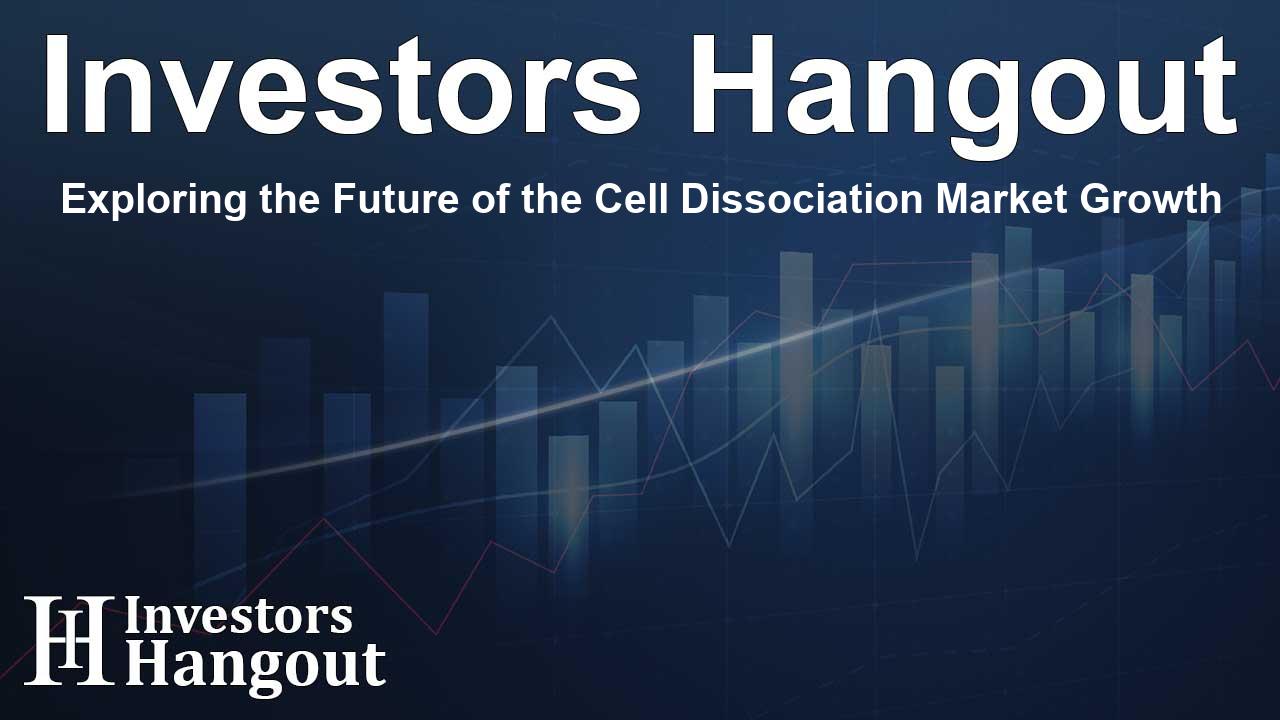Exploring the Future of the Cell Dissociation Market Growth

The Expanding Cell Dissociation Market
The global cell dissociation market, currently valued at USD 406.36 million, is projected to grow significantly, reaching approximately USD 1,451.89 million by 2034. This impressive growth, with a compound annual growth rate (CAGR) of 13.58%, highlights the increasing significance of cell dissociation in various scientific fields, particularly in diagnostics and therapeutic applications.
Understanding Cell Dissociation
Cell dissociation refers to the process of separating individual cells from a tissue or cell culture. This essential procedure is primarily employed in research and therapeutic contexts, including stem cell research, cancer studies, and drug discovery. The advancements in enzymatic and mechanical methods have significantly enhanced the efficacy of cell dissociation, leading to broader applications in regenerative medicine and cellular therapies.
Current Trends Influencing Market Growth
One of the primary drivers of the cell dissociation market is the increasing utilization of cell-based assays in drug discovery and custom medical treatments. This growing demand for robust cell dissociation products showcases the crucial role of cell isolation technologies in developing novel therapies, particularly in stem cell and gene therapies. Furthermore, automation and the integration of omics technologies are streamlining processes, thereby accelerating market growth.
Regional Market Insights
North America currently leads the cell dissociation market, holding a significant market share of 38%. This dominance is backed by a strong investment in life sciences research and an advanced healthcare infrastructure. Moreover, the region's emphasis on developing precision medicine and innovative medical solutions continues to fuel demand for sophisticated cell dissociation technologies.
Asia Pacific on the Rise
Meanwhile, the Asia Pacific region is poised for rapid expansion in the coming years due to an evolving healthcare system prioritizing research in regenerative medicine. Countries like China, Japan, and India are increasing their focus on R&D initiatives, significantly contributing to the market's growth.
Product Segmentation and Market Drivers
The cell dissociation market can be divided into product types, including enzymatic and non-enzymatic dissociation. In 2024, enzymatic dissociation led the market due to its effectiveness in extracting cells from complex tissues. However, the non-enzymatic segment is anticipated to witness the fastest growth, owing to its ability to preserve cell surface proteins crucial for various applications.
- Enzymatic dissociation methods are effective for their flexibility in downstream applications, such as flow cytometry and in vitro assays.
- Non-enzymatic methods maintain key functional properties of cells, making them more adaptable for sensitive applications.
The end-user segment indicates that pharmaceutical and biotechnology companies are the primary users of cell dissociation technologies, particularly for vaccine development and drug discovery processes.
Key Market Players and Innovations
The competitive landscape feature key players such as Merck KGaA, Thermo Fisher Scientific, and Danaher Corp., which are continuously innovating within the market. Recent collaborations and partnerships aim to enhance laboratory automation and develop advanced cell-based research solutions, fostering an innovative atmosphere in the biotechnology field.
Emerging Collaborations
Several noteworthy collaborations have emerged recently. For instance, advancements in automated cell-based assays highlight the priority of streamlining research processes and improving efficiency. Additionally, partnerships focused on integrating innovative technologies signal a positive direction for the sector.
Challenges in the Market
Despite the optimistic growth outlook, the cell dissociation market faces challenges, such as ensuring high cell viability and purity post-dissociation. Additionally, the high costs associated with specialized enzymes and reagents pose obstacles to developing new technologies in cell dissociation.
Frequently Asked Questions
What is the projected growth of the cell dissociation market?
The cell dissociation market is projected to reach approximately USD 1,451.89 million by 2034, growing at a CAGR of 13.58% from 2025 to 2034.
What applications drive the cell dissociation market?
The primary applications include stem cell research, cancer therapy, drug discovery, and the development of cell-based therapies.
Which regions dominate the cell dissociation market?
North America leads the market, with Asia Pacific expected to experience the fastest growth due to increased focus on R&D in healthcare.
What are the key drivers for market growth?
The growth is driven by increased demand for advanced cell-based therapies, innovations in biotechnology, and the adoption of automated solutions in research.
Who are the major players in the cell dissociation market?
Key players include Merck KGaA, Thermo Fisher Scientific, and Danaher Corp., among others, competing through innovation and product development.
About The Author
Contact Lucas Young privately here. Or send an email with ATTN: Lucas Young as the subject to contact@investorshangout.com.
About Investors Hangout
Investors Hangout is a leading online stock forum for financial discussion and learning, offering a wide range of free tools and resources. It draws in traders of all levels, who exchange market knowledge, investigate trading tactics, and keep an eye on industry developments in real time. Featuring financial articles, stock message boards, quotes, charts, company profiles, and live news updates. Through cooperative learning and a wealth of informational resources, it helps users from novices creating their first portfolios to experts honing their techniques. Join Investors Hangout today: https://investorshangout.com/
The content of this article is based on factual, publicly available information and does not represent legal, financial, or investment advice. Investors Hangout does not offer financial advice, and the author is not a licensed financial advisor. Consult a qualified advisor before making any financial or investment decisions based on this article. This article should not be considered advice to purchase, sell, or hold any securities or other investments. If any of the material provided here is inaccurate, please contact us for corrections.
